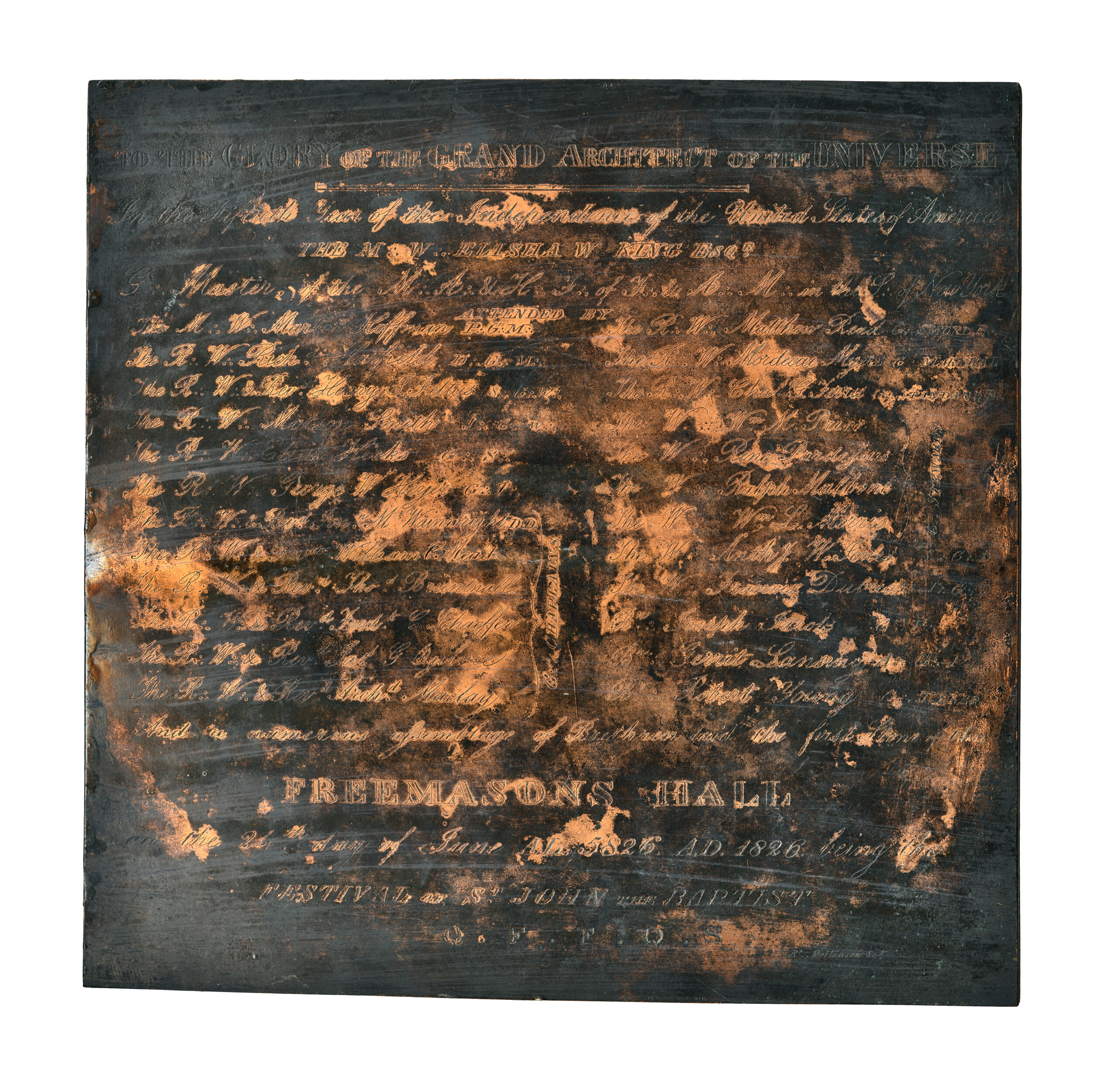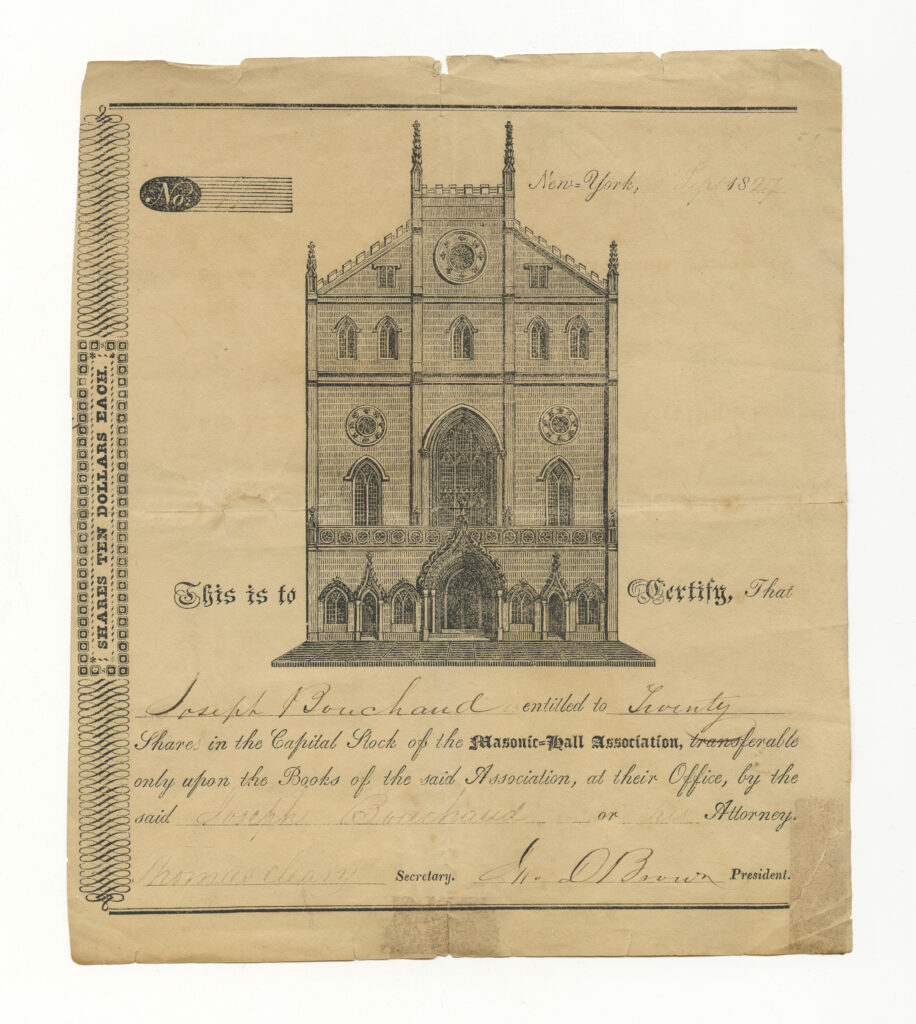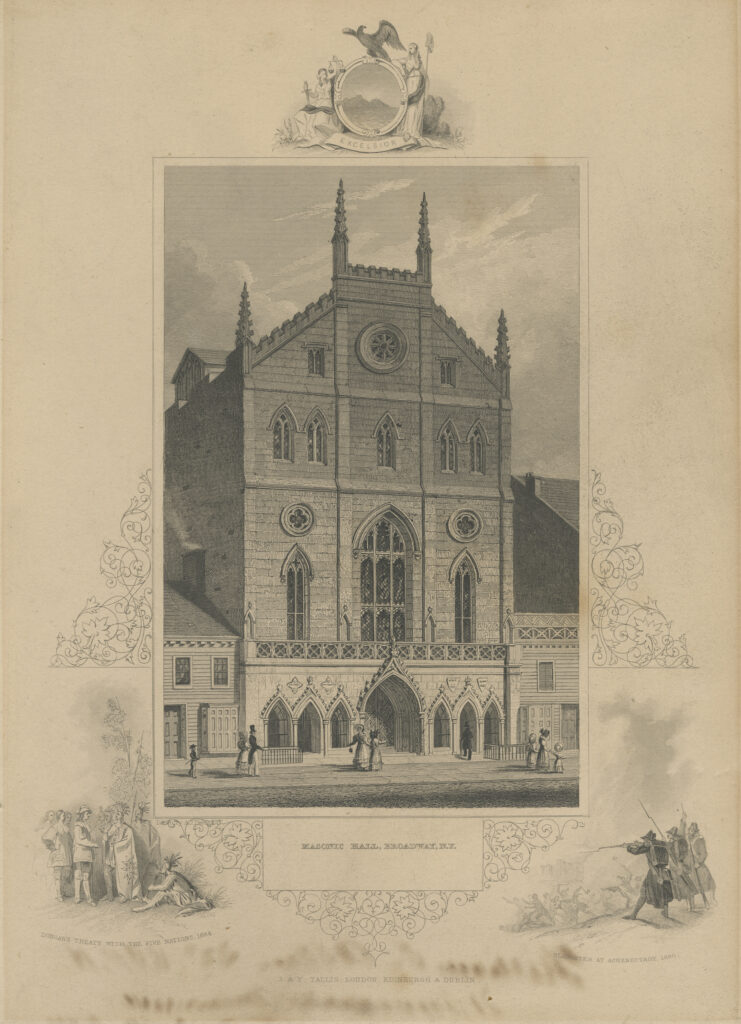The Freemasons’ Hall that once stood at Broadway between Duane and Pearl Street was also known as Gothic Hall. In 1824, the New York brethren purpose the idea of a Masonic Hall in New York City to the Grand Lodge to accommodate the members. Then, the project and fundraising began, and Hugh Renagle was the architect in charge. The cornerstone was laid by the Grand Master MW Elisha W. King, on June 24th, 1826.
The Masonic Hall was completed and dedicated in 1827. It had three stories and had served New York Masons for 30 years. During the rise of Anti-Masonic movement, the hall’s name was changed Gothic Hall, given its Gothic architecture.
The items deposited in the cornerstone were not discovered until 1857, after the demolition of the building. Various items recovered from the cornerstone consisted of a copy of the Grand Lodge of New York’s Constitution, several Masonic newsletters from 1826, business cards, coins, blank certificates, and a wax seal.



References:
The Grand Lodge of New York Proceedings of 1893.
